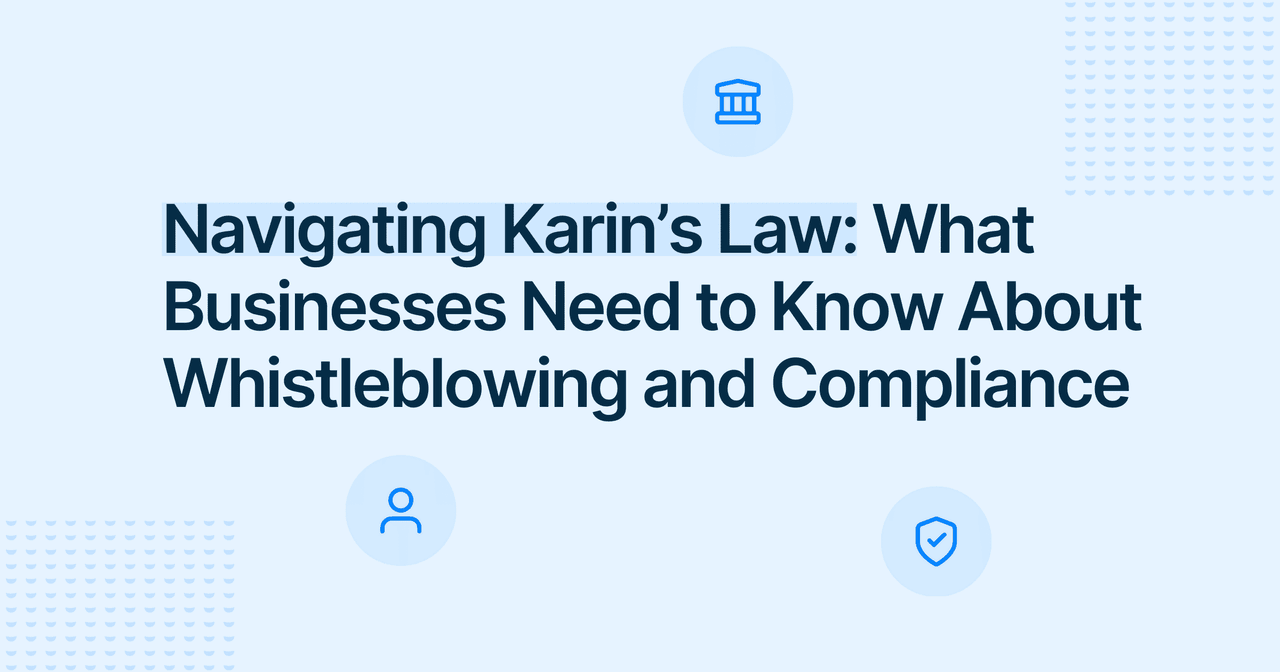



Try FaceUp Today
Set up anonymous reporting in minutes and start building a stronger, safer culture.
Whistleblowing

Alaa El-Shaarawi
Copywriter and Content Manager
Published
2025-11-12
Reading time
6 min


Table of contents
Subscribe to our newsletter
When a student finally decides to speak up, it’s rarely spontaneous. It’s the result of weeks, sometimes months, of quiet weighing: Will I be believed? Will this make things worse? Who do I even tell?
That hesitation sits at the centre of how schools and universities in Australia are rethinking safety, reporting, and trust. The data shows it’s not a marginal issue; it’s systemic, cultural, and deeply tied to how institutions listen.
In 2017, the Change the Course report from the Australian Human Rights Commission exposed what many students already knew: harassment and assault were disturbingly common across campuses. Nearly half of all students had experienced some form of sexual harassment, and most never reported it.
Fast forward to 2021. The National Student Safety Survey (NSSS) reaffirmed the trend. Despite new policies, student support offices, and awareness campaigns, lifetime rates of sexual assault and harassment remained high. The 12-month numbers may have dipped, possibly due to post-COVID disruptions, but the reality is still sobering.
At the same time, universities have started to see something new: a rise in the number of reports. Melbourne University saw an increase in 2024. On the surface, that sounds alarming, but in truth, it’s a good sign. It suggests students finally trust that when they speak up, someone will listen.
Australia’s higher education regulator, TEQSA, now looks closely at how universities support safety and wellbeing as part of the Higher Education Standards (HES) Framework. Institutions that fail to meet expectations risk their registration status.
Beyond compliance, TEQSA has issued guidance on how to prevent and respond to sexual assault and sexual harassment (SASH). And in 2023, Universities Australia released its Guidelines for University Responses to Sexual Harm, followed by the federal government’s approval of a national ombudsman in 2024 to handle campus sexual assault complaints.
These developments signal a shift: student safety is no longer a side issue. It’s now a measure of institutional integrity.
The problem isn’t that students don’t want to speak. It’s that traditional channels often make it hard to do so. Reporting a sensitive issue can mean walking into an office, naming names, and filling out a form that might end up buried in a file.
That’s where tools like FaceUp come in.
FaceUp gives universities a secure and confidential platform for reporting incidents, whether it’s harassment, discrimination, or misconduct. Students can report anonymously if they choose, and communication can still flow both ways. The right people, such as student safety officers or compliance teams, are notified instantly, and every step is traceable.
For institutions under TEQSA oversight, that transparency matters. It creates an auditable trail aligned with good practice, helps demonstrate compliance, and most importantly, proves to students that the system actually works for them.
More reports shouldn’t be seen as a crisis. They’re a sign that people trust the system again.
Universities aren’t the only ones confronting this challenge. Australia’s primary and secondary schools are facing their own crisis; one that’s both familiar and increasingly digital.
The Australian Institute of Health and Welfare (AIHW) reports that seven in ten children aged 12–13 experience at least one bullying-like behaviour each year. For one in five Year 4 students, it happens weekly.
Add the online dimension, and the numbers climb higher. According to the eSafety Commissioner, 44% of young Australians have had a negative online experience in just the last six months, and 15% received direct threats or abuse.
Behind those numbers are real children whose confidence and mental health are being shaped by what happens in hallways, group chats, and social media feeds.

Following the Royal Commission into Institutional Responses to Child Sexual Abuse, Australia adopted the National Principles for Child Safe Organisations. They set a clear national standard: every school must create a culture of safety, strong governance, and effective response pathways for reports.
Each state and territory has since built its own child-safe standards and mandatory reporting laws, making the framework even more detailed. That’s good for protection, but it also leaves many schools asking the same question: how do you make it easy for a 12-year-old to speak up about something that scares them?
Here, again, technology can make the difference between silence and support.
Schools using FaceUp create a safe, structured path for reporting. A student, parent, or staff member can use a secure link or QR code to describe what happened. Reports go straight to the right person, whether that’s a child safety officer, wellbeing team, or principal. The process is quick, confidential, and documented.
For schools, that means compliance isn’t just a checkbox. It’s a daily practice. Every report creates a record, every follow-up adds accountability, and every resolved case builds a stronger sense of trust.
The shift we’re seeing across both higher education and K–12 is that safety reporting is no longer about damage control. It’s about culture.
When institutions use confidential tools like FaceUp, they’re not just reacting to incidents. They’re showing students that their voices have a place. Over time, that changes the atmosphere. Students notice when their school or university listens. They notice when issues get addressed. And they notice when nothing happens.
Transparency, even when it reveals uncomfortable truths, is worth it. Rising report numbers don’t mean failure. They mean the invisible is becoming visible. And that’s how real change begins.
A safer university isn’t one with zero reports. It’s one where every student knows exactly where to go when something feels wrong, and trusts that the system will respond with care, not bureaucracy.
A safer school isn’t one where bullying never happens. It’s one where every incident gets addressed before it turns into trauma.
FaceUp helps make that possible by giving institutions a practical, human-centred way to connect safety frameworks with everyday reality. It bridges the gap between policy and experience; between what’s written in a handbook and what a student feels they can actually do.
And that’s the real measure of a child-safe, student-safe culture: not perfect statistics, but people who finally feel safe enough to speak.
FaceUp began in 2017 as a student-driven project to help classmates report bullying anonymously. Within a week, over a hundred schools had joined. What started in classrooms is now used by thousands of organisations in more than 70 countries—continuing the same mission: to make it easier for people to speak up when something isn’t right.
FaceUp is trusted by schools and universities worldwide to handle reports of bullying, harassment, and wellbeing concerns securely and confidentially. To see how FaceUp supports child-safe and student-safe environments, visit the Whistleblowing for Schools page.
Book a demo with FaceUp to explore how your institution can turn safety policies into real protection.




Set up anonymous reporting in minutes and start building a stronger, safer culture.
Keep Reading

Alaa El-Shaarawi2025-12-197 min
Workplace Environment

Marie Roland2025-12-165 min
Whistleblowing

Alaa El-Shaarawi2025-12-087 min
Workplace Environment